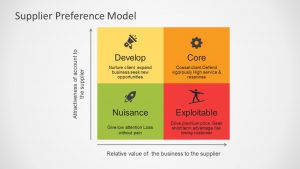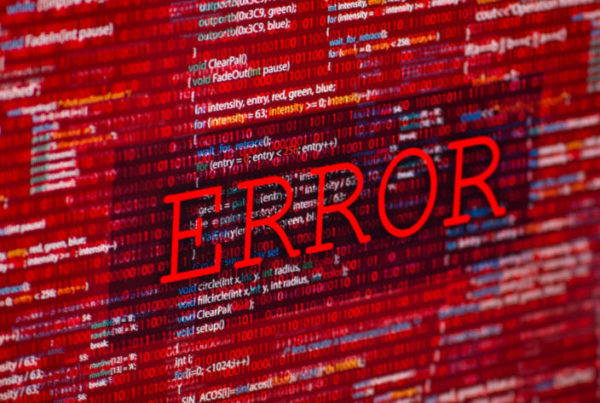In business, just as in our personal lives, times of adversity show us who our real friends are and those relationships that will endure and strengthen.
We’re all reading and hearing about how the pandemic is shining a spotlight on the fragility of what we thought were pretty robust supply chains. In this article I’ll describe some immediate actions you can take to identify where the big opportunities and threats lie within your supply chains from the perspective of supply chain relationships. I’ll describe some simple tools that will help you spot incongruence and misalignment, which in turn helps identify those links in the chain that represent the highest risk of supply interruption.
You might be feeling the pain or losing sleep because of those supply chain partners who appear to have self-preservation as their sole priority. Maybe you are heartened by the way some of your suppliers have really stepped up and worked with you to ensure that you both survive and thrive through this crisis. Are you seeing any great examples of creativity and innovation which will build resilience and agility in your supply chain and help you cope with the next crisis even better?
But what about proactively identifying those supply chains where you need to focus your energy to build resilience?
In our globalised economy, even the simplest supply chains are actually quite complex. I read that 94% of the Fortune 1000 organisations have or had Tier 1 or 2 suppliers in Covid-19 impacted regions in China (https://fortune.com/2020/02/21/fortune-1000-coronavirus-china-supply-chain-impact/). Despite heralding supply sustainability as a top strategic objective to appease shareholders, tax payers or media, price still seems to trump sustainability in the majority of sourcing strategies, to the detriment of supply chain resilience. The proof of this comes to the fore when a global pandemic comes knocking.
So, how can we identify where the cracks may be that will have a significant detrimental impact on our organisations? We’ve probably got 100s, if not 1000s of suppliers within our supply chains. It isn’t practical, nor necessary, to develop close collaborative relationships with them all. So how do we separate the wheat from the chaff?
Here’s 3 actions you can take straight away to reduce your supply interruption risk and deliver the value you expect from your supply chains.
Action 1) Let’s map our world
-

Fig. 1 The Kraljic Matrix
Segment your suppliers. Where are you spending most of your money? Apply a Pareto 80:20… you will probably find that 80% of your spend is with 20% of your suppliers. This top 20% are your Category A suppliers and should be your initial focus
- Segment your purchases. The Kraljic matrix (Fig. 1) is a useful tool to map your purchases in terms of organisational impact (things to consider here include; business interruption risk, loss of sales risk, proportion of your organisation’s total spend) and how difficult it is to source product or service (considerations here include the number of suppliers, type of supply market, time it takes to onboard suppliers, regulations and legislation that impact the purchase)
- Data does nothing without application. Use your analysis from actions 1 & 2 to prioritise where your greatest risk could be hiding and where you need to focus your efforts first;
-
- Category A suppliers
- Most important procurements – Strategic & Bottleneck items
How many of your Category A supplier’s map into the Strategic & Bottleneck boxes? Does this feel right?
Action 2) Does your supply chain reality reflect what is should?
The next action is to check if the supply chain you should have in place for these purchases actually reflects reality, especially through periods of change.
As an example, I’ve set up supply chains to supply the chemical that makes a medicine work, known as the Active Pharmaceutical Ingredient (API). If there is an interruption to the supply of the API, the drug doesn’t get made and the patient doesn’t receive their life saving medicine. So, from a Kraljic perspective, this is a strategic procurement; High impact and High supply complexity (you can’t just switch to an alternative supplier due to regulatory and quality restrictions).
A strategic supply setup for this kind of purchase should be characterised by a long term, collaborative relationship that underpins innovation and risk mitigation.
During periods of growth and stability the relationship will likely be delivering the expected mutual value as identified at the outset. If the relationship has been set up correctly, then through times of crisis, despite the supply chain coming under pressure, the strong relationship has created resilience and enables all parties to weather the storm and come out stronger as a result of it.
However, what we may actually be experiencing is that in times of crisis, when the supply chain comes under pressure, cracks may start to show. Suddenly there seems to be a focus on the contract (e.g. Force Majeure) rather than the relationship. Innovative, solution focussed thinking dries up and tension in the relationship builds.
So, take a look at your most important purchases and Category A suppliers and check that the relationships you have in place are appropriate to deliver what was expected when it was set up.

A useful tool to use is the relationship spectrum (see the figure on the left). For the example I described above, when the supply was set up, an API would fall into the Strategic box. This helped me to put in place a supply relationship that would deliver the organisation’s needs for this kind of procurement. From a relationship perspective, a collaborative one was needed in order to deliver the needs of the organisation. This meant putting in place a longer term agreement that incentivised collaborative working, underpinned by a culture of trust, openness and “jointness”.
Action 3) Recognise those who are performing well, especially through crisis.
How often do you communicate supply chain successes and great supplier relationships across your organisation? I’m guessing you don’t see it that often. This is a huge missed opportunity to further strengthen the supplier relationship. In addition, the raising of the profile within the organisation can improve key stakeholder engagement in the success of the relationship and overcome negative perceptions and biases towards external parties.
For the poor performers, it’s time for an open and honest discussion. Do you understand why they are underperforming? Is there anything from the high performer relationships that can be applied to poor performers. Jointly develop a turnaround plan that is SMART (Specific, Measurable, Achievable, Realistic, Time-bound).
How do you think you should be treated and why? Why are some suppliers slow to respond to requests? Why is every scope change met with an invoice? Why aren’t suppliers offering ideas for innovation and continuous improvement?
 The supplier preferencing model is a useful tool to map the supplier’s behaviour to give clues as to how they may be viewing you (see the Supplier Preferencing Model on the right). Adding the supplier preferencing mapping to the Kraljic assessment can help highlight key risk areas, for example; in the API example above, if we are feeling that our strategic suppliers are actually treating us as a nuisance then this is a sign of future problems and may explain why they seem to not care about you through crisis.
The supplier preferencing model is a useful tool to map the supplier’s behaviour to give clues as to how they may be viewing you (see the Supplier Preferencing Model on the right). Adding the supplier preferencing mapping to the Kraljic assessment can help highlight key risk areas, for example; in the API example above, if we are feeling that our strategic suppliers are actually treating us as a nuisance then this is a sign of future problems and may explain why they seem to not care about you through crisis.
For those suppliers who are not willing to engage , then you’ve got a couple of options;
- It’s time to explore switching to alternative suppliers,
- If this isn’t possible, then consider your business interruption mitigation strategies. These could include additional incentivisation, hold more stock or pay more. In addition, you could explore ways of making yourself more attractive to them as a customer. Approaches include identifying opportunities to place more business with them, joint marketing and communications.
So, in summary, we’ve looked at a number of models that can help us identify where the key risks and opportunities may lie within our supply chains. These models overlay each other to give the procurement professional a number of lenses through which to analyse their supply chains and separate the wheat from the chaff and build supply chain resilience and sustainability.
If you’d like to have some fun mapping your supply chains, or would like to learn more about this topic, then please get in touch.
email: mark@orcapartnership.uk
Tel: +447766070093




